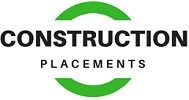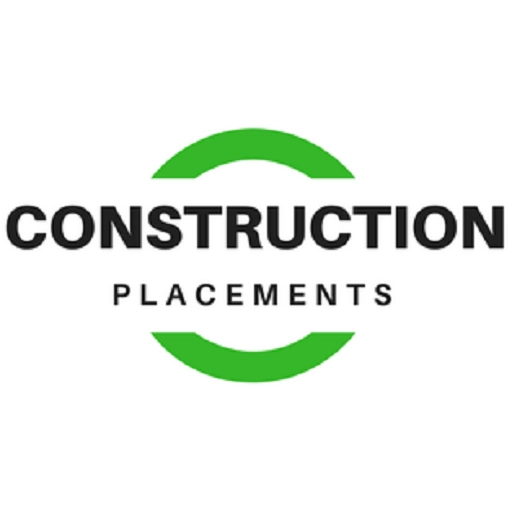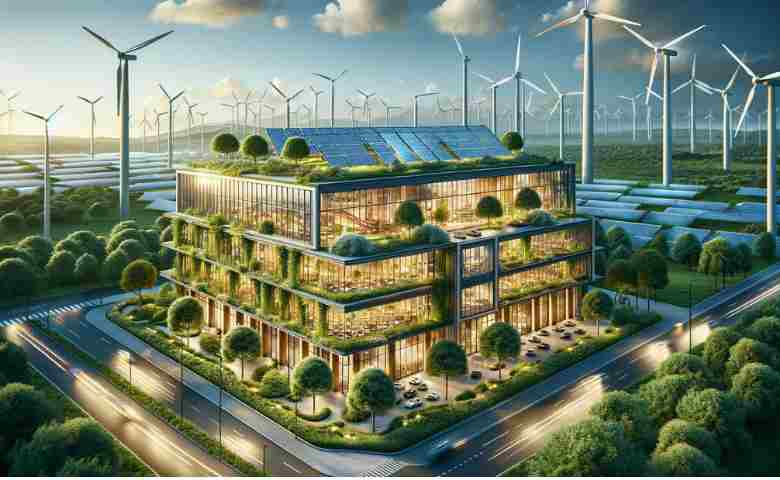Last Updated on April 4, 2024 by Admin
In today’s world, the importance of energy efficiency cannot be overstated. As global energy consumption continues to rise, it has become increasingly crucial to minimize the environmental impact of our buildings and the energy they consume. This is where innovative design plays a significant role.
Table of Contents
Understanding the Importance of Energy Efficiency
The role of energy efficiency in sustainable development cannot be ignored. It has become a cornerstone of global efforts to combat climate change, reduce greenhouse gas emissions, and ensure a cleaner and more sustainable future for generations to come.
Energy efficiency encompasses a wide range of practices and technologies that aim to reduce the amount of energy required to perform various tasks. From energy-efficient appliances to smart building designs, the possibilities for improving energy efficiency are vast and impactful. By optimizing energy use, individuals and organizations can not only save money on utility bills but also contribute to a more sustainable world.
The Role of Energy Efficiency in Sustainable Development
Energy efficiency is a key pillar of sustainable development. By reducing energy consumption, we can lower our dependence on fossil fuels and decrease harmful emissions that contribute to climate change. Not only does energy efficiency help protect the environment, but it also enhances the resilience and stability of our energy systems.
Implementing energy-efficient practices in industries such as manufacturing and transportation can lead to significant reductions in energy waste and operational costs. By embracing energy-efficient technologies and processes, businesses can improve their competitiveness, reduce their carbon footprint, and demonstrate corporate social responsibility.
Economic and Environmental Benefits of Energy Efficiency
Besides its environmental impact, energy efficiency also brings significant economic benefits. According to studies, energy-efficient buildings can save up to 30% on energy bills while improving occupant comfort and well-being. These savings can be reinvested in other sustainable initiatives, stimulating economic growth and creating job opportunities.
Furthermore, energy efficiency plays a crucial role in energy security by reducing the demand for imported energy resources and enhancing energy independence. By diversifying energy sources and promoting energy conservation, countries can strengthen their energy resilience and mitigate the risks associated with energy supply disruptions.
The Intersection of Design and Energy Efficiency
Design plays a critical role in maximizing energy efficiency. By incorporating energy-saving principles into the planning and construction stages, designers can create buildings that strike a balance between functionality, aesthetics, and environmental responsibility.
When it comes to the intersection of design and energy efficiency, one key aspect to consider is the use of sustainable materials. Designers are increasingly turning to eco-friendly materials like bamboo, reclaimed wood, and recycled metal to reduce the environmental impact of construction. These materials not only help in conserving natural resources but also contribute to healthier indoor air quality for occupants.
Principles of Energy-Efficient Design
Energy-efficient design encompasses various principles that balance the need for functionality and reduced energy consumption. Passive solar design, for instance, utilizes the sun’s energy for heating and natural lighting, reducing the need for artificial lighting and heating systems. Designers can also employ shading strategies to minimize heat gain during summer months, reducing the reliance on air conditioning.
Another important principle in energy-efficient design is proper insulation. Well-insulated buildings retain heat in the winter and keep cool air in during the summer, reducing the workload on heating and cooling systems. By using materials with high thermal resistance, designers can create spaces that are comfortable year-round while minimizing energy usage.
How Design Innovations Contribute to Energy Efficiency
The field of design is constantly evolving, and innovative technologies provide new opportunities for energy efficiency. For instance, energy-efficient lighting solutions, such as LED bulbs, significantly reduce power consumption while providing high-quality lighting. Smart thermostats and automated energy management systems enable precise control over heating, cooling, and lighting, further optimizing energy usage.
Furthermore, the incorporation of green roofs and living walls in design not only adds a touch of nature to urban environments but also contributes to energy efficiency. Green roofs provide natural insulation, reducing heat loss in winter and heat gain in summer, while also improving air quality and reducing stormwater runoff. Similarly, living walls help in cooling the air, reducing the urban heat island effect, and enhancing biodiversity in built-up areas.
Key Features of Energy-Efficient Designs
When it comes to energy-efficient designs, specific features and strategies play a crucial role in minimizing energy consumption and maximizing overall efficiency.
Energy-efficient designs go beyond just the basics; they are a combination of innovative technologies and sustainable practices that aim to reduce environmental impact while optimizing performance. By incorporating advanced materials and cutting-edge technologies, architects and engineers can create buildings that not only save energy but also promote a healthier and more sustainable living environment.
Energy-Efficient Materials and Technologies
The choice of materials plays a significant role in energy-efficient designs. For example, using insulated concrete blocks or double-glazed windows can minimize heat transfer, reducing the need for excessive heating or cooling. Incorporating renewable energy technologies like solar panels or geothermal systems further decreases reliance on traditional energy sources.
Moreover, the use of eco-friendly materials such as recycled steel, bamboo flooring, and low VOC paints not only reduces the carbon footprint of the building but also contributes to a healthier indoor environment for occupants. These materials are not only sustainable but also durable, ensuring the longevity and efficiency of the building over time.
Designing for Optimal Insulation and Ventilation
Proper insulation and ventilation are vital for energy-efficient designs. Effective insulation helps maintain indoor temperatures, reducing the need for constant heating or cooling. Ventilation design should maximize natural airflow to minimize the dependency on mechanical systems, ensuring efficient air circulation and comfort.
In addition to insulation and ventilation, passive design strategies such as orientation, shading, and landscaping can also significantly impact the energy performance of a building. By strategically placing windows to capture natural light and heat, incorporating shading devices to prevent overheating in summer, and planting trees for natural cooling, designers can further enhance the energy efficiency of a building while creating a comfortable and sustainable living space.
Future Trends in Energy-Efficient Design
As technology continues to evolve, new trends are emerging in energy-efficient design. These trends have the potential to reshape our approach to building design and drastically impact energy consumption.
One of the key emerging trends in energy-efficient design is the concept of passive design strategies. Passive design focuses on utilizing the natural elements of a building’s location to reduce energy consumption. Techniques such as proper building orientation, strategic window placement for natural lighting and ventilation, and thermal mass utilization help to minimize the need for artificial heating and cooling systems, thus lowering energy usage and operational costs.
Smart Homes and Energy Efficiency
The rise of smart home technologies presents exciting opportunities for energy efficiency. Integration of smart systems allows for real-time monitoring and control of energy usage, ensuring optimal efficiency and reducing energy waste. Smart appliances, such as energy-efficient refrigerators and intelligent HVAC systems, contribute to overall energy savings.
Furthermore, the concept of smart grids is gaining traction in the realm of energy-efficient design. Smart grids enable two-way communication between utility companies and consumers, allowing for dynamic pricing based on real-time energy demand. This technology empowers consumers to make informed decisions about their energy usage, ultimately leading to reduced energy consumption and lower utility bills.
The Role of Renewable Energy in Design
Renewable energy sources, such as solar and wind power, are gaining momentum in the field of design. Incorporating renewable energy technologies into building design helps offset energy consumption, lowers carbon emissions, and reduces dependence on traditional energy sources. As technology advances and costs decrease, the integration of renewable energy systems is becoming increasingly viable.
Another innovative approach to energy-efficient design is the concept of net-zero energy buildings. These buildings are designed to produce as much energy as they consume over the course of a year, typically through a combination of energy-efficient design strategies and renewable energy systems. Net-zero energy buildings not only reduce environmental impact but also offer long-term cost savings by eliminating energy bills.
Overcoming Challenges in Implementing Energy-Efficient Designs
Despite the benefits of energy-efficient design, several challenges must be addressed to ensure widespread adoption and implementation.
Balancing Aesthetics and Energy Efficiency
One common challenge faced by designers is finding a balance between aesthetics and energy efficiency. Designers must strive to create visually appealing structures while prioritizing energy efficiency in materials, layouts, and systems. With innovative design solutions and advancements in sustainable materials, it is possible to achieve both aesthetic appeal and energy performance.
When considering aesthetics in energy-efficient designs, architects and designers often explore the use of natural light and ventilation to reduce the reliance on artificial lighting and mechanical systems. Incorporating green spaces, such as living walls or rooftop gardens, not only enhances the visual appeal of a building but also contributes to improved air quality and insulation, thus boosting energy efficiency.
Addressing Cost and Accessibility Issues
The initial cost of energy-efficient materials and technologies can sometimes be an obstacle in implementing energy-efficient designs. However, it is essential to consider life-cycle costs and long-term savings associated with lower energy consumption. To promote wider adoption, it is crucial to improve accessibility to affordable energy-efficient materials and technologies.
Furthermore, addressing cost and accessibility challenges involves educating stakeholders about the benefits of energy-efficient designs. Providing case studies and data demonstrating the long-term cost savings and environmental impact of such designs can help overcome initial hesitations and encourage investment in sustainable practices.
Final Refelctions
Maximizing energy efficiency through innovative designs is not only a responsibility but also an opportunity. By embracing energy efficiency principles, designers can create buildings that ensure a sustainable future, improve occupant comfort, and contribute to a healthier planet.
Alos, acchieving LEED certification signifies a building’s commitment to environmental excellence and sustainability. Central to this pursuit is the incorporation of passive solar design, an approach that maximizes natural light and heat to reduce energy consumption. Such strategies are pivotal in energy conservation efforts, allowing buildings to operate more efficiently and with a lower carbon footprint. Furthermore, the concept of smart buildings takes this efficiency to the next level, utilizing advanced technology to manage energy use in real-time, ensuring optimal performance. Coupled with renewable energy integration, these practices represent a comprehensive approach to sustainable building, where every aspect from design to operation is geared towards minimizing environmental impact while enhancing livability and functionality.
For additional insights into maximizing energy efficiency through innovative designs, the following resources are invaluable: The U.S. Green Building Council offers comprehensive information on LEED certification and sustainable building practices; The International Energy Agency provides extensive research on energy efficiency and the role of innovation in achieving sustainability; and ArchDaily, where you can explore case studies and articles on cutting-edge architectural designs that emphasize energy conservation. These resources serve as a gateway to understanding how innovative design can lead to more energy-efficient and sustainable buildings.
Related Posts:
- A Guide to Home Energy Efficiency Improvements
- 15 Simple Steps to Make Your Home More Sustainable
- The Latest Sustainable Building Materials and Techniques used in the construction industry
- Key Factors To Consider When Choosing Windows
- The Construction Industry’s Response to Climate Change
FAQs
LEED (Leadership in Energy and Environmental Design) certification is awarded to buildings that meet high green building standards. These standards encompass energy efficiency, water conservation, CO2 emissions reduction, improved indoor environmental quality, and resource stewardship, marking a building’s sustainability achievement and leadership.
Passive solar design leverages a building’s site, climate, and materials to minimize energy usage. By optimizing window placement and choosing materials that enhance natural lighting and heat retention, it reduces the need for artificial heating and cooling, conserving energy and lowering utility costs.
A building is deemed “smart” when it utilizes technology and interconnected systems to automate and optimize operations such as HVAC, lighting, and security. These systems adjust to occupant behavior, environmental shifts, and grid demands, improving energy efficiency, reducing costs, and enhancing occupant comfort.
Renewable energy integration in buildings involves using sources like solar panels and wind turbines to power operations. This can include direct installations, such as rooftop solar panels, or connections to off-site renewable sources, aiming to lessen fossil fuel dependence, decrease greenhouse gas emissions, and enhance sustainability.


